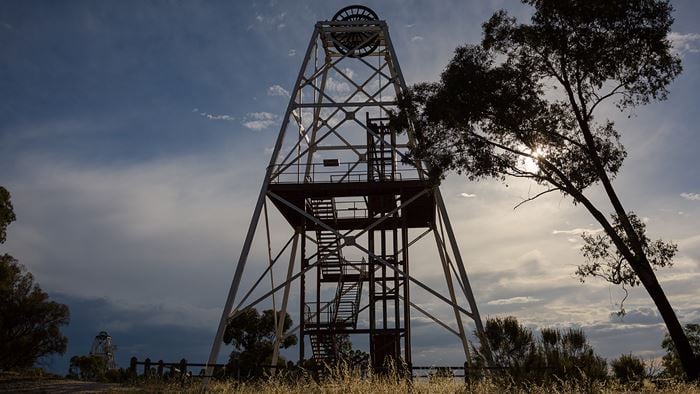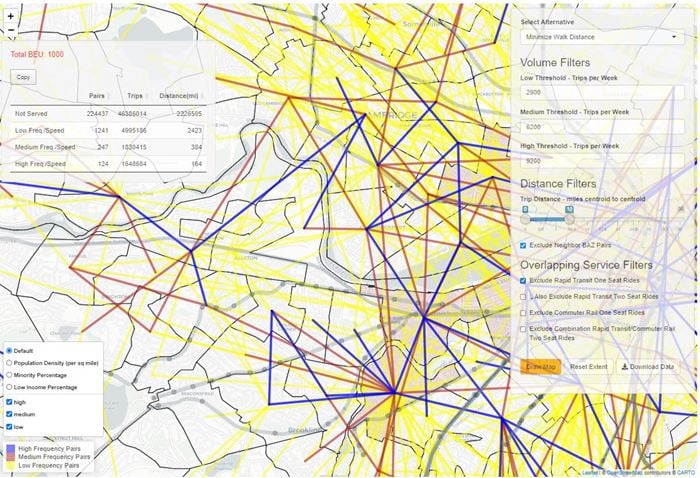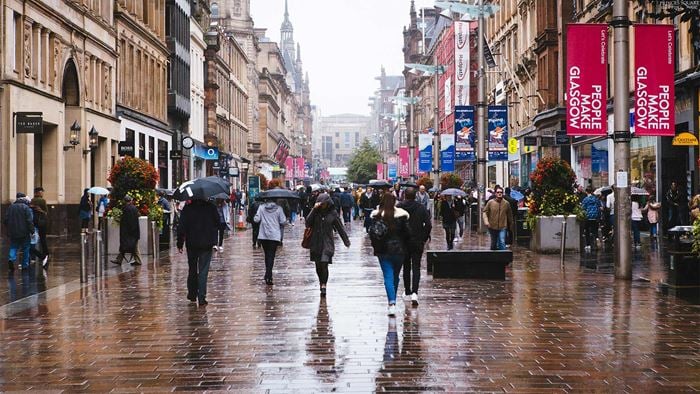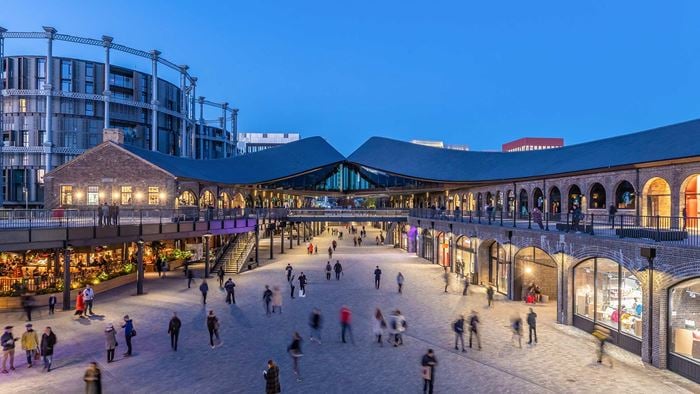Creating interchanges and making them destinations in their own right is the secret to restoring the ‘esprit’ of yesteryears stations, which in turn has a transformative effect on our communities, restoring pride, and revitalising and reigniting whole city areas.

When train stations first came about, they were designed around people and the passenger experience. They were an energiser for small cities, the heart of civic life. They were meeting places and market spaces and were designed and built with a quality of aesthetic that people were proud of and wanted to protect.
But then in the 1960s and 70s we turned our back on stations in favour of the car.
“When the volume of cars became too great for our streets, we went back to the commuter train, but this time design was all about getting the cheapest materials to minimise replacement costs when passengers damaged them. Commuter trains and stations looked and felt awful - narrow corridors and low ceilings, crappy materials, crammed with people. They had no ‘esprit’. ”
Nille Juul-Sørensen Director
When St Pancras in London re-opened in 2006, things changed again… for the better. It was a new way of treating a station, turning an unloved, historic rail terminus into a dynamic transport interchange and a destination in its own right – it’s an international hub for the high speed Eurostar, a commuter station, an underground station, a food marketplace, has a Michelin restaurant, is an art gallery, has a book club, and has even played host to some of the world’s biggest music stars.
Over one third of the people at St Pancras each day don’t take a train. They are there to do other things.
“This was a place not too long ago that you would only visit if you wanted a stolen car quickly. The whole area has now been completely rejuvenated and the revitalised station was a major part of that transformation. ”
Nille Juul-Sørensen Director
The key change was an evolution of the stand-alone station from having a single purpose to having other functions which are valuable for the community.
“The station became an interchange, connecting many public transport modes and ensuring the smooth easy movement of people. The interchange became a destination. It was now integrated into the design of the broader urban fabric, rather than being just a stand-alone station. ”
Kristian Winther Associate, Architecture
More cities across the globe are moving away from looking at station design as functional and transport-related only, to spaces – or ‘interchange destinations’ – which combine other experiences – community gardens on unused roof’s, farmers markets, libraries, pools, gyms, doctors and civic services for the community – essentially ‘hacking’ the traditional idea of station by taking one function and doing something completely different with it.
IKEA HACK: A Paris train platform was ‘hacked’ by IKEA, when they provided an opportunity to experience their new range of sofa furniture. Commuters could sit, learn and upload information via QR code. This ‘hack’ is transforming passenger experience, utilising existing technology to create a place of inspiration and engagement. Yes it’s a commercial activity, but it’s a smart idea that gives passengers a smile and changes peoples behaviour. Not one couch was shredded or graffitied during this hack.
Fast forward into the future and ‘hacking’ is sure to be a top trend in interchange design, but Nille and Kristian also believe we will see more emphasis on quality, technology and groundbreaking architectural designs which help improve passenger flows.
“We will see these places being friendly spaces. Well lit, nice to be in, clean, great architecture… you don’t want to walk through a machine, you are walking through an urban space… humans appreciate beautiful spaces, buildings with interesting life, textures and so on. ”
Kristian Winther Associate, Architecture
The opportunities are endless.
Ticketing at the train door, a reserved train seat, a chair that moulds to the passengers body, your favourite music playing. Technology can help make these things possible and it has the potential to change everything and bring with it a seamless travel experience.
The other vital piece of the interchange destination jigsaw is creating a seamless experience for the passengers and also those non-passengers using these spaces.
“It shouldn’t be about making people spend longer time than they need to, it’s about enabling people to spend time because they want to. Everything should be functional, like way-finding, it should be very easy to use and people shouldn’t need to hunt for that information to find where they need to go. ”
Nille Juul-Sørensen Director
We need to think about the interchange as part of a bigger city system. Each piece of infrastructure should connect with others. The architecture should be more contextual and reflect the city we live in; which means different stations will be different in different cities, even in different parts of those cities.
Challenges
Designing transport interchanges is certainly complex, and while we are seeing these projects pop up across the world, there are several barriers – or challenges – which are preventing more rapid adoption.
The biggest barrier is the mindset of governments, train companies and major operators who are restricted by the layers and layers of regulations and standards have been built up over a few hundred years of the rail industry.
“When a new idea is put forward, or questions are asked to try things differently, usually the first answer is ‘no’ because that’s the way things have always been done. It’s time to change this mindset and explore the possibilities. ”
Nille Juul-Sørensen Director

We have to have smarter design, offer legislative incentives and most importantly focus on quality if we are to create more vibrant, useful and integrated station spaces that have users and the community at their core and connect them with the local neighbourhood.
Other factors include the current siloed approach to designing these projects, a lack of understanding as to benefits, and cost.
The cost to create a destination style interchange rather than a stand alone thoroughfare is perceived to be larger at the outset, but the long-term gains are far greater and this is something that needs to be understood better.
“Also, different organisations or bodies own and control the various elements… the train company don’t necessarily look at the city, or the urban planners don’t look at the station ... one major thing we could do better is get these people to work on projects together rather than in silo’s. Melbourne Quarter is a good example where this has been achieved … a station has been upgraded to a destination and a massive urban development is now following. ”
Kristian Winther Associate, Architecture
It’s important to educate that there are added benefits for private developers. If there is a great station interchange destination next to their residential building, there will be more people and it will create a better community, better possibilities for urban development and so on.
 ;
;









